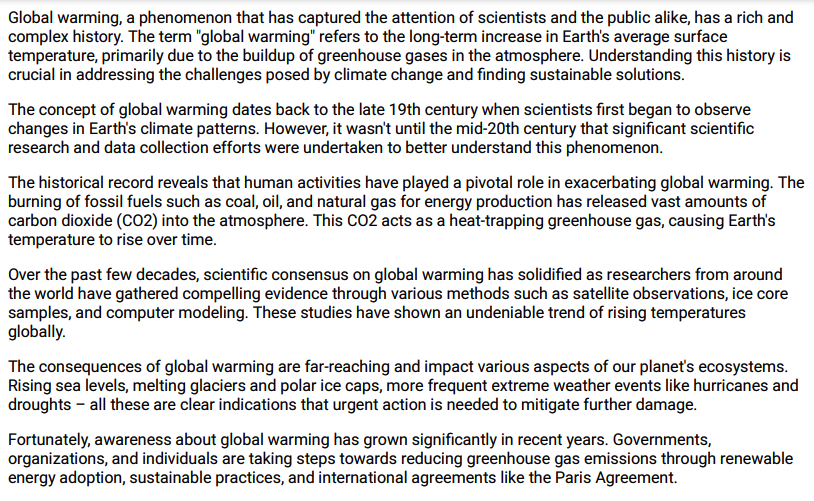Global Warming History
Summary:
The Global Warming History is a complex narrative that traces back to the late 19th century when scientists first noted shifts in Earth’s climate patterns. It wasn’t until the mid-20th century that extensive research began to understand this phenomenon deeply. Human activities, notably burning fossil fuels, deforestation, and industrial processes, have significantly contributed to the increase in atmospheric greenhouse gases, leading to a rise in Earth’s temperatures. This long-term warming trend has been confirmed by various methods, including satellite observations, ice core samples, and computer modelling, which have all pointed to a consistent rise in global temperatures.
The repercussions of global warming are extensive, affecting numerous aspects of the planet’s ecosystems. Manifestations include rising sea levels, melting glaciers, and increased extreme weather events, signalling urgent action. There has been a growing awareness and a concerted effort to mitigate these effects. Governments and organizations are adopting renewable energy sources, sustainable practices, and international agreements like the Paris Agreement to curb greenhouse gas emissions.
Studying global warming’s history is not just about understanding past trends; it’s about using this knowledge to predict future climate scenarios and emphasize the urgency of addressing this crisis. Scientists can identify patterns that inform future predictions by examining temperature fluctuations over millennia through ice cores, tree rings, and historical records. This understanding underscores the importance of reducing emissions, transitioning to renewable energy, and conserving the environment. Recognizing our role in global warming’s history is crucial as we strive for a sustainable future for future generations.
Excerpt:
Global Warming History
Global warming, a phenomenon that has captured the attention of scientists and the public alike, has a rich and
complex history. “Global warming” refers to the long-term increase in Earth’s average surface
temperature, primarily due to the buildup of greenhouse gases in the atmosphere. Understanding this history is
crucial in addressing the challenges of climate change and finding sustainable solutions.
Global warming dates back to the late 19th century when scientists first began to observe
changes in Earth’s climate patterns.


Reviews